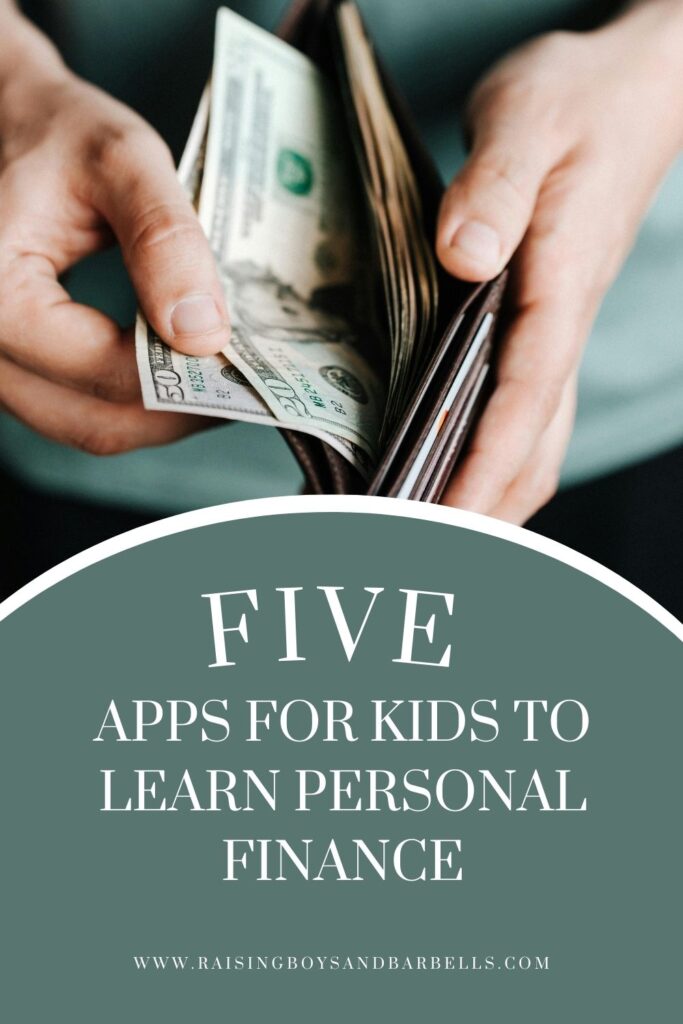Affiliate disclosure: This post may contain affiliate links which means that at no additional cost to you, I may receive a small commission from purchases made using my links.

As a mom and a passionate advocate for financial literacy, I believe that teaching kids about money early on is one of the greatest gifts we can give them. Unfortunately, financial literacy isn’t typically part of the school curriculum, leaving many kids to learn these crucial skills later in life, often the hard way. That’s why it’s essential for parents to step in and start teaching their children about personal finance from a young age.
One of the most powerful lessons you can impart is the concept of investing early to take advantage of compound interest. This not only sets the stage for a secure financial future but also instills habits that can last a lifetime. Let’s dive into why investing early is so important and explore some top apps that can help make personal finance fun and engaging for kids.
The Magic of Compound Interest
Albert Einstein famously called compound interest the “eighth wonder of the world.” It’s a simple yet incredibly powerful concept: the interest you earn on an investment earns interest itself. Over time, this compounding effect can turn small, regular contributions into substantial sums.
Here’s a simple way to explain it to kids: Imagine planting a tree. At first, it’s just a small sapling. But over time, with a bit of care and regular watering, it grows and eventually bears fruit. Similarly, when they invest a small amount of money, it starts to grow. As they keep adding to it and letting it sit, the money starts to earn interest, which then earns more interest, just like the tree bearing more fruit each year.
Why Start Early?
- Time is on Their Side: The earlier kids start investing, the more time their money has to grow. Even small amounts can grow significantly over decades.
- Learning by Doing: Early investing helps kids learn important financial principles through real-life experience.
- Building Good Habits: Starting young helps establish smart financial habits that can last a lifetime.

Top 5 Apps for Kids’ Personal Finance
To make learning about money engaging and fun, here are five fantastic apps designed specifically for kids:
- Greenlight: This is the app that my children personally use. This app offers a debit card for kids, managed by parents. It teaches children how to budget, save, and spend wisely. Greenlight also includes features for setting savings goals and learning about investments.

Overview of Greenlight
Greenlight is a financial app designed to teach kids and teens about money management. It offers a debit card for kids that parents can manage through a companion app. The platform aims to empower children with essential financial skills, providing a safe environment for learning about budgeting, saving, and spending under parental supervision.
Features
- Customizable Debit Card: Kids receive a debit card that can be used in stores or online, just like an adult card, but with parental controls. My kids added a picture of our puppy to theirs and thought this was so cool.
- Parental Controls: Parents can set spending limits, receive real-time notifications of transactions, and manage allowances.
- Savings Goals: Kids can set savings goals and allocate their money into different savings buckets.
- Investing Platform: Greenlight offers an investing feature that allows kids to learn about stock investing with parental approval.
- Educational Content: The app provides lessons and resources on various financial topics to educate kids on money matters.
Pros
- Hands-On Learning: Greenlight offers a practical, hands-on way for kids to learn about financial management through real-life transactions.
- Parental Control: The app allows parents to oversee their children’s spending and set parameters to ensure safe financial habits.
- Customizable Experience: Parents can tailor the app’s features to suit their child’s age and maturity level, such as setting up automated allowance deposits and assigning chores for payment.
- Educational Focus: Greenlight includes educational content to teach kids about saving, spending, and investing, promoting financial literacy.
- Investment Learning: The investing feature introduces kids to the world of stocks and helps them understand the basics of investing with parental guidance.
Cons
- Subscription Fee: Greenlight charges a monthly fee, which may be a drawback for some families looking for free educational resources.
- Limited Investment Options: While the investment feature is educational, it offers limited options compared to more comprehensive investment platforms.
- Dependency on Parental Oversight: The app relies heavily on parental involvement, which means it might not work as well for families seeking a more autonomous learning experience for their kids.
- Potential for Overspending: Despite parental controls, some children might find it tempting to overspend or make impulsive purchases with their debit card.
- Limited International Availability: Greenlight is primarily available in the United States, limiting access for international users.
Conclusion
Greenlight is a robust tool for parents who want to teach their children about financial responsibility in a safe and controlled environment. Its combination of practical experience and educational content makes it a valuable resource for fostering financial literacy. However, the monthly fee and reliance on parental oversight might be considerations for some families. Overall, Greenlight provides an engaging way to introduce kids to the world of money management and investing.
Some other financial apps for kids to check out include:
- GoHenry: Similar to Greenlight, GoHenry provides a prepaid debit card for kids, allowing them to manage their money under parental supervision. It includes tools for setting up savings goals and spending limits, making it a practical way for kids to learn about money management.
- PiggyBot: Aimed at younger children, PiggyBot is a virtual piggy bank where kids can keep track of their allowance, savings, and spending. It’s a simple yet effective way to introduce financial concepts to young minds.
- Bankaroo: Created by a kid for kids, Bankaroo is a virtual bank that helps children track their money, set savings goals, and learn about budgeting. It’s a great tool for instilling financial responsibility early on
- BusyKid: This app combines chores and allowance to teach kids about earning, saving, sharing, and spending. Kids can invest in real stocks with parental approval, making it an excellent way to introduce the concept of investing.

Conclusion
Teaching kids about personal finance and the power of compound interest can set them on a path to financial independence and success. By using engaging tools like the apps mentioned above, you can make learning about money a fun and practical experience. Let’s give our kids the financial education they deserve and prepare them for a prosperous future!